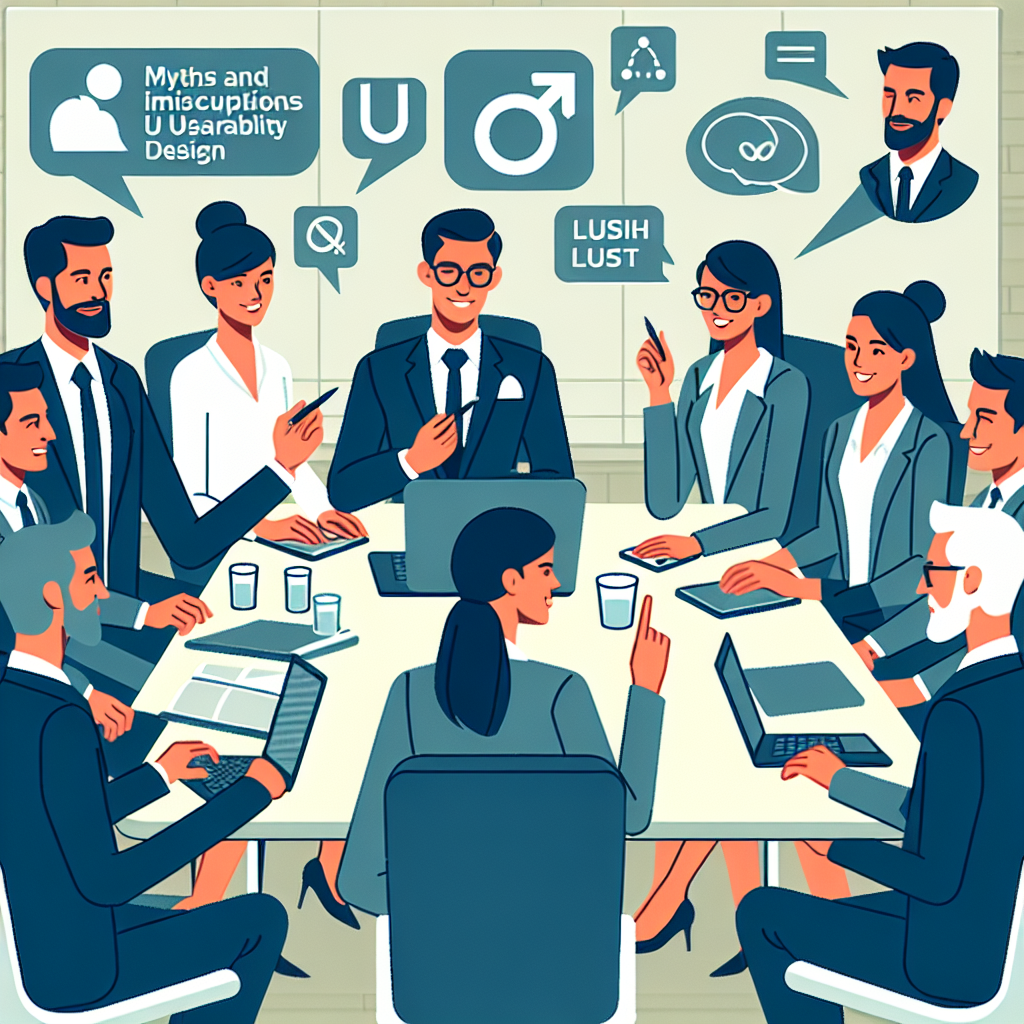
Imagine youve just launched your online store, and customers are flocking to your website. Exciting, right? But what if, despite the traffic, they leave without making a purchase? The crux of the problem often lies in usability design. It’s not just about aesthetics—it’s about ensuring a smooth, intuitive experience for your users. Good usability can turn curious visitors into loyal customers. Lets dive into why this design aspect is paramount for your business success.
Statistics show that 88% of online shoppers are less likely to return to a site after a bad experience. That’s a staggering figure! With so much competition, failing to prioritize usability improvement could cost you dearly. Think about it: whens the last time you abandoned a shopping cart because the website was confusing? Exactly!
Take the case of a local clothing retailer who revamped their website. Before the redesign, users struggled to find products due to poor navigation. After implementing user-friendly usability design, they saw a 40% increase in sales and an impressive drop in bounce rates. They made it easier for customers to shop—problem solved!
Usability isn’t just about making things pretty; it’s about digging deep into what your users really need. Picture this: youre planning a vacation, and your travel booking site is cluttered with information. Annoying, right? Now imagine a streamlined site that understands your preferences and offers quick access to booking options. That’s usability improvement at its finest, making your experience smooth and stress-free.
It might be tempting to cut costs on usability design, but consider this: investing in a well-designed user interface can save you money in the long run. A report by Forrester found that every dollar spent on UX brings a return of $100. With services starting as low as €210, it’s a no-brainer!
| Service | Cost (EUR) | Benefits |
| Website Redesign | 1200 | Improved navigation, increased user engagement |
| Online Store Development | 1500 | User-friendly shopping experience |
| SEO Promotion - 20 Keywords | 499 | Increased visibility on search engines |
| SMM Promotion - MIDDLE Package | 1059 | Engaging more users through social media |
| Website Support - Start Package | 210 | Ongoing assistance for seamless operation |
| Google Adwords - Monthly Support | 50 + 10% budget | Targeted advertising strategies |
| Email Newsletter - Premium | 789 | Direct communication with customers |
| Viber Banner Advertising | 70 | Direct engagement with users via messaging |
| Publication to Play Market | 800 | Advent of a new revenue stream via mobile |
| CRM System Development | 6000 | Streamlined customer management for better service |
If you want to enhance user experience, increase customer satisfaction, and ultimately boost your bottom line, contact us today! Our team of professional specialists at webmaster.md is ready to help you elevate your usability design and make your business shine. Call Arsenii at +373 601 066 66, or visit our site to get started!
Frequently Asked Questions

Have you ever visited a website that felt like navigating a maze? You click on links, and they lead you in circles, leaving you frustrated and eventually making you click away. This dilemma—poor usability—can be detrimental to businesses. However, organizations that prioritize usability improvement can witness a remarkable transformation in user experience. Let’s explore some inspiring real-world examples where businesses have turned their fortunes around through thoughtful design and user-centric strategies.
Imagine a well-known fashion retailer struggling with online sales due to a cluttered and confusing website. Customers often complained about the difficulty in finding sizes and styles. After conducting user testing, the company decided to implement a dramatic redesign focused on usability. They simplified their navigation, categorized products more intuitively, and enhanced the mobile experience. As a result, they reported a whopping 30% increase in conversion rates in just three months. The improved usability led to happier customers, who could easily find their desired items and make purchases without frustration.
In our tech-savvy world, grocery chains are increasingly moving to online shopping platforms. A major grocery chain faced challenges with their online ordering system, with many users abandoning their carts because of a complicated checkout process. After investing in usability improvement, they streamlined the checkout process by reducing unnecessary steps, implementing auto-fill features for returning customers, and clearly displaying delivery options. Consequently, their cart abandonment rate dropped by an impressive 25%, boosting their monthly online sales significantly.
Consider a tech company with a powerful software product but an unintuitive user interface. Many users struggled to understand functionalities, leading to an influx of support tickets and customer frustration. They initiated a project focusing on usability, which involved creating clear tutorials, simplifying the interface, and utilizing user feedback during a redesign. Within six months, customer satisfaction scores increased by 40%, and support tickets dropped by <50%. Happy users meant more positive word-of-mouth and, ultimately, a stronger market position.
Even nonprofits are not immune to the critical need for usability design. A nonprofit organization was facing challenges with its donation portal. Users found the process arduous, leading to fewer contributions. After investing in usability improvement, they simplified their online donation forms to be user-friendly, optimized for mobile, and incorporated clear calls to action. As a result of the changes, the organization saw a dramatic 60% increase in online donations within just weeks, showcasing how enhancing usability can drive significant engagement even for charitable causes.
Another powerful example comes from a renowned hotel chain that experienced declining booking rates on their website. Their booking process was lengthy and confusing, often leaving potential customers feeling overwhelmed. The hotel chain decided to optimize their website for better usability by reducing the number of steps required to book a room and introducing a clean, responsive design. As a result, they reported a 50% increase in direct bookings online, proving that user-friendly websites directly correlate with increased revenue.
These examples illustrate that thoughtful usability improvement isnt just a nice-to-have; its a necessity for businesses that wish to thrive in today’s digital landscape. Whether youre in retail, technology, nonprofit, or hospitality, enhancing user experience can have profound benefits:
Are you ready to improve your business’s usability? Connecting with our professional specialists at webmaster.md can set you on the right path! Call Arsenii at +373 601 066 66 or visit our website to discover how we can help transform your user experience today!

In the ever-evolving digital landscape, many businesses still cling to outdated beliefs about usability design. These myths can lead companies to overlook critical aspects of user experience, inadvertently driving customers away. Let’s explore some of the most common misconceptions and why ignoring them could cost you not just sales, but the loyalty of your customers as well.
One prevalent belief is that only big, well-funded companies need to invest in usability improvement. This myth could not be further from the truth! Every business, regardless of size, stands to gain from focusing on usability. For instance, a local bakery might assume their established customer base doesn’t need an online ordering system because they are a small operation. However, in today’s digital-first world, even small businesses require user-friendly interfaces to meet customer expectations. By neglecting usability, they risk losing potential customers to competitors with more intuitive websites.
Another misleading notion is that an attractive design automatically ensures usability. A visually stunning website can turn heads, but if users struggle to find essential information or complete a task, it’s all for naught. A classic example comes from a tech startup that poured resources into creating a sleek, modern website. However, users couldn’t easily navigate its features, leading to high bounce rates. When they finally prioritized usability improvement, they reported a significant increase in user engagement and retention, proving that looks alone won’t drive success.
Many businesses believe that enhancing usability design is an expensive undertaking they cannot afford. This thinking is shortsighted. Investing in usability may incur upfront costs, but failing to do so can lead to long-term losses. Consider an e-commerce site that overlooks mobile responsiveness. Customers are likely to abandon their shopping carts in frustration when they struggle to make purchases from their phones. In contrast, investing in a responsive design could yield a 50% increase in sales, making it a worthwhile expenditure.
Some business owners think that once they’ve designed a user-friendly website, they can simply sit back and relax. In reality, usability improvement should be an ongoing process. User feedback, industry trends, and technological advancements are constantly changing the digital landscape. A well-known travel booking site conducts regular user tests to identify pain points and areas for improvement. By continually refining their platform, they maintain high customer satisfaction rates and remain a competitive force in the market.
Finally, there’s a misconception that usability design should cater to a general audience. This myth can be dangerously misleading. Every target audience has unique needs and expectations. For example, a financial institution may assume that a generic design will work for everyone, but users ranging from tech-savvy millennials to older adults may interact with their platform differently. By neglecting to understand their audience and failing to adapt usability accordingly, they risk alienating potential clients. Investing in research and tailored usability solutions can enhance user experience for all, improving overall satisfaction and retention.
Ignoring these usability design myths not only affects conversion rates but could also have far-reaching impacts on brand loyalty and reputation. A negative user experience often leads customers to abandon their carts, choose competitors, or spread negative reviews. For instance:
Clearly, the stakes are high. By debunking these myths and prioritizing usability design, your business can create a user-friendly environment that fosters loyalty and drives sales.
Don’t let outdated beliefs hold your business back. At webmaster.md, we are here to guide you through every step of enhancing your usability design. Our team of professional specialists can help you develop solutions tailored to your unique needs. Contact Arsenii at +373 601 066 66 or visit our website to start your journey towards improved user experience today!

As we move deeper into the digital age, the landscape of usability improvement is constantly evolving. Businesses that want to stay ahead of the curve must be aware of emerging trends that are shaping user experiences. Let’s explore the key trends in usability design you can’t afford to overlook.
Accessibility in usability design refers to making websites usable for all individuals, including those with disabilities. With the global push for inclusivity, designing for accessibility is no longer optional; its essential. Innovative features like voice navigation, screen reader compatibility, and more intuitive keyboard navigation are becoming standard. For instance, major companies are adopting ARIA (Accessible Rich Internet Applications) standards to ensure their digital products are accessible to everyone. By focusing on accessibility, businesses are not just complying with regulations but also broadening their customer base. ⭐
As smart speakers and voice-activated devices become increasingly popular, integrating voice user interfaces (VUIs) into usability design is essential. Users now expect to interact with technology using natural language, and businesses that adapt will benefit significantly. Consider how you can incorporate voice search optimization into your websites; it’s predicted that by 2025, over 75% of households will own a smart speaker! Voice interfaces can enhance user experience and make technology more interactive and engaging. ⭐
Personalized user experiences are now a must-have. By leveraging artificial intelligence (AI) and machine learning, businesses can analyze user behavior and preferences to offer tailored experiences. For instance, online retailers can recommend products based on browsing history, leading to a 10-30% increase in sales conversions! Using AI-powered chatbots can also streamline customer service, enhancing overall usability. Personalization not only improves user satisfaction but also builds loyalty by making users feel valued. ⭐
With over 50% of web traffic coming from mobile devices, adopting a mobile-first approach in usability improvement is crucial. Mobile-first design ensures that websites are optimized for mobile users before considering desktop versions, providing a seamless experience regardless of the device. Brands like Starbucks have successfully embraced mobile-first design, resulting in increased app downloads and user engagement. A responsive, mobile-friendly design is no longer just an option; it’s a requirement. ⭐
Simplicity is making a significant impact in usability design. Users appreciate clean, uncluttered interfaces that allow them to focus on what matters most. Companies are adopting minimalism to make navigation intuitive and information easy to find. The trend leans towards the use of white space, simple color palettes, and clear typography. Leading brands like Apple have long promoted minimalism, emphasizing how good design can improve usability and increase user satisfaction. Less is truly more! ✨
Emotional design is all about creating a positive emotional response in users while interacting with a product. As user experience becomes a key differentiator for brands, understanding users’ emotions will be vital. By designing interactions that invoke joy, trust, or excitement, companies can forge stronger connections with their audience. For instance, incorporating playful animations or celebratory messages upon completing an action can leave users feeling good about their interactions. Users are not just looking for functionality; they want to feel something! ❤️
Data plays a crucial role in informing usability design decisions. Companies are increasingly relying on analytics and user feedback to identify pain points and improve user experiences. Employing tools like heatmaps allows businesses to visualize how users interact with their sites, ultimately leading to data-driven improvements. Companies that harness data effectively can fine-tune their designs, resulting in a more seamless user journey and reduced drop-off rates. ⭐
The future of usability improvement is bright, with numerous trends that promise to enrich the user experience. By embracing these changes, businesses can not only meet customer expectations but exceed them. As we navigate this evolving landscape, prioritizing usability design will be key to staying competitive. Are you ready to lead the charge?
Your organization can benefit from these trends! At webmaster.md, our team of professional specialists can help you implement the latest usability design strategies tailored to your needs. Don’t hesitate to contact Arsenii at +373 601 066 66 or visit our website to discover how we can help you excel in usability design!
Leaders in the IT market |
| 14+ years of experience and innovative solutions to help your business stand out and grow. |
Inspiring portfolio |
| 150+ successful projects: from sleek landing pages to complex corporate systems. |
Team of experts |
| 51+ professionals who bring your ideas to life with maximum efficiency. |

| NOTORIUM TRADEMARK AWARDS |
| Notorium Trophy 2017, Notorium Gold Medal 2018, Notorium Gold Medal 2019 |

| TRADE MARK OF THE YEAR |
| Gold Medal 2016, Gold Medal 2017, Gold Medal 2018, Gold Medal 2019 |

| THE BEST EMPLOYER OF THE YEAR |
| According to the annual Survey conducted by AXA Management Consulting - 2017, 2018, 2019 |